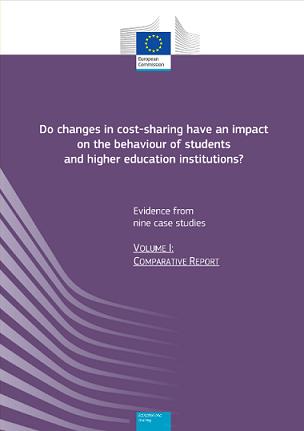European Commission (2014) “Do changes in cost-sharing have an impact on the behaviour of students and higher education institutions?“, Cost-sharing Impact Study, 23 Ιουνίου.
This report analyses the effects of different models of cost-sharing in higher education (the split between public and private contributions to higher education funding) on students and higher education institutions.
The study examines trends in participation and completion in third-level education, as well as factors such as system structure, institutional revenue and strategy over the last 15 years in nine case study higher education systems in order to understand better how different models of funding – and changes to these – affect students and institutions.
The countries covered by the study are Austria, Canada, UK-England, Finland, Germany, Hungary, Poland, Portugal and South Korea.
Higher education systems have been and are still faced with the task of accommodating growing numbers of students without compromising the quality of education, and without creating undesirable inequalities in access and completion. It is in this context that governments have been adjusting the balance of public and private resources with the goal of achieving more inclusive, more effective, and more sustainable higher education systems. Internationally comparative data sets show that over the last two decades, there has been a general shift towards larger shares of private funding of higher education (see Chapter 2). This shift was achieved largely through raising additional or higher revenues from tuition fees (sometimes termed ‘student contributions’). The concept of ‘cost-sharing’ is used here to investigate this shift in the balance of public and private funding. Changes in the way costs are shared can take several forms, including the introduction of tuition fees where they did not previously exist or a sharp increase where they already did. They can also involve a reduction or even a freezing of student grants or student loan subsidies (reductions in student aid also constitute an increase in the private funding necessary to cover educational and living costs), but also public policies that encourage enrolment shifts from a heavily subsidised public sector to a much less subsidised, fee-dependent private sector.



